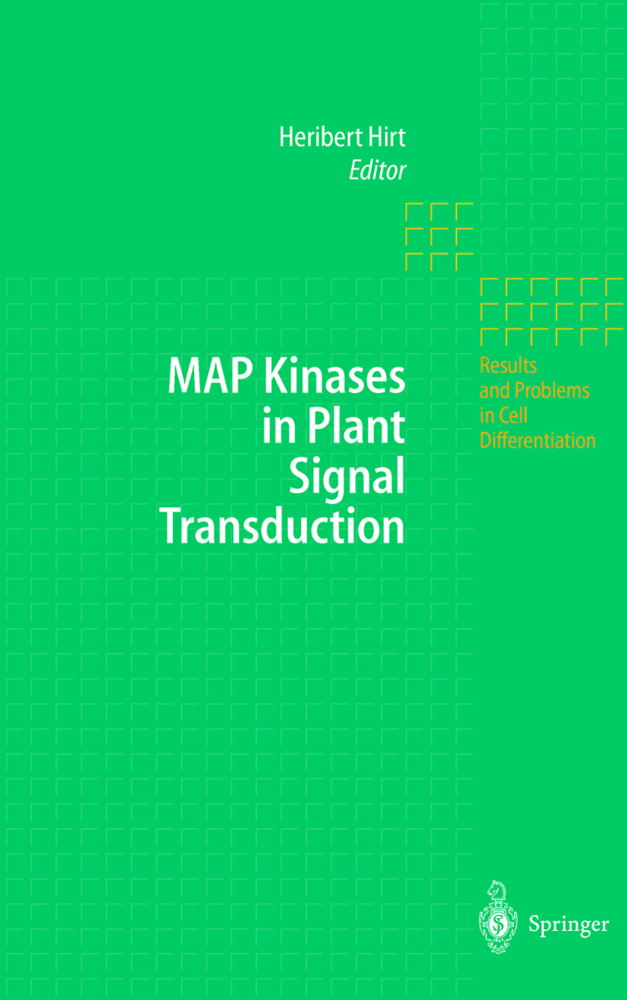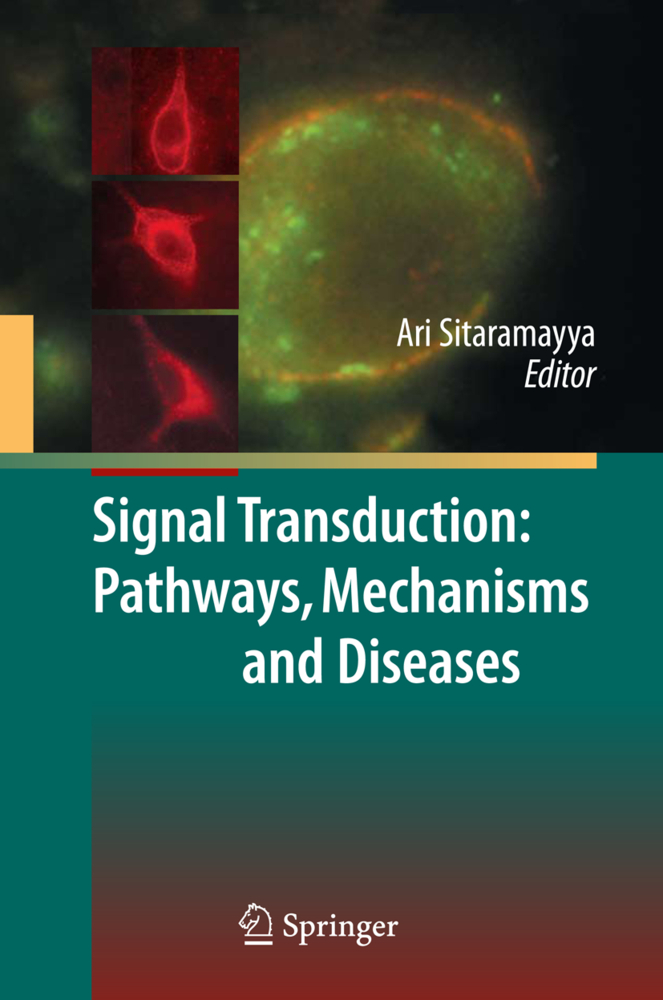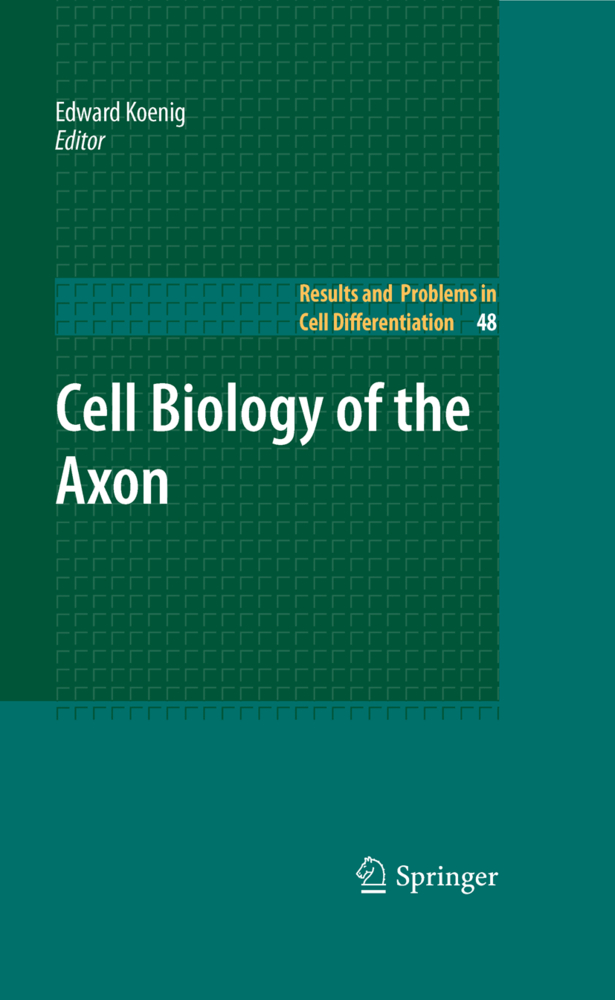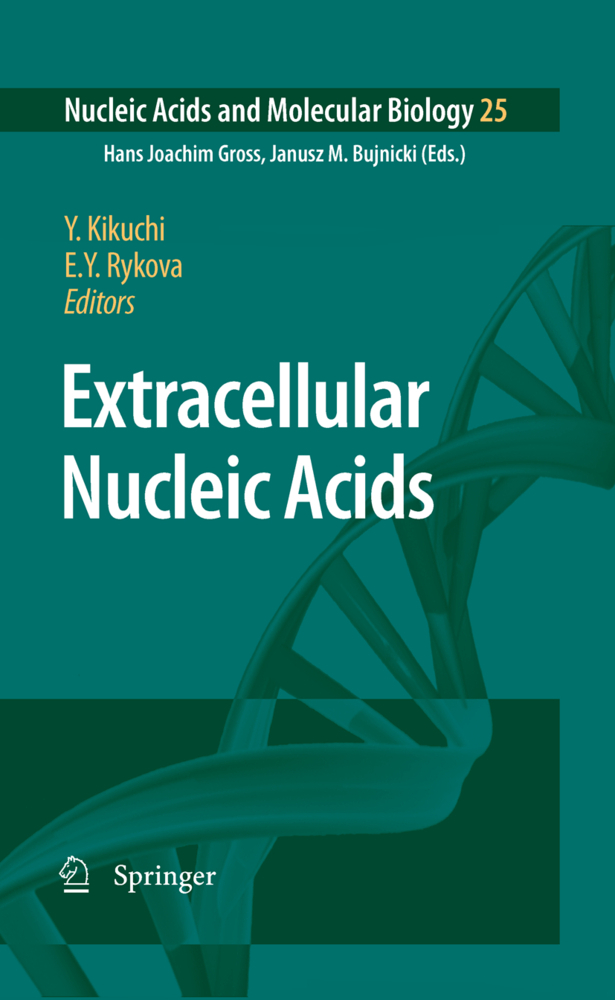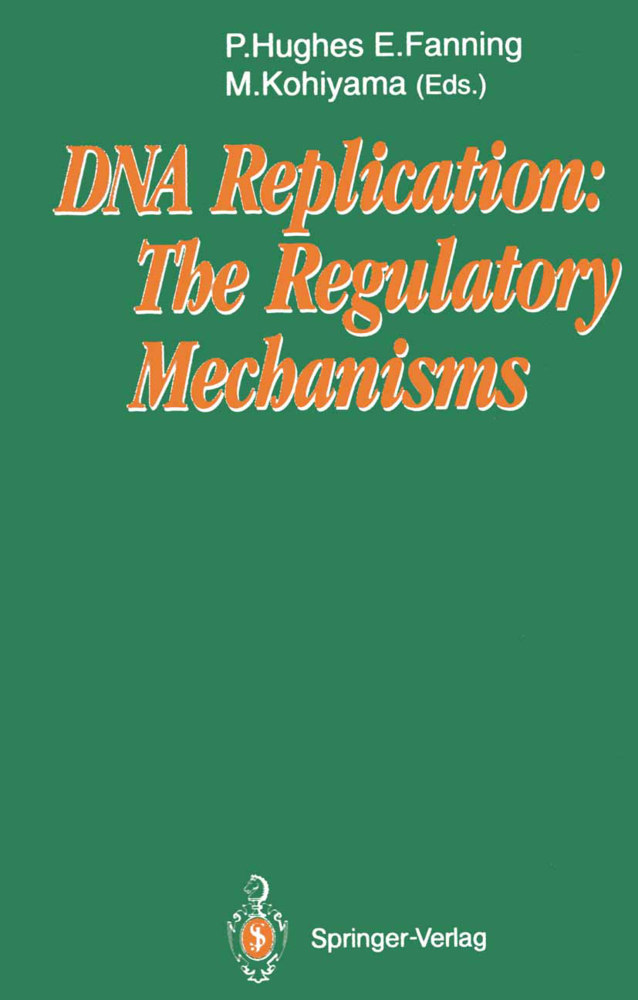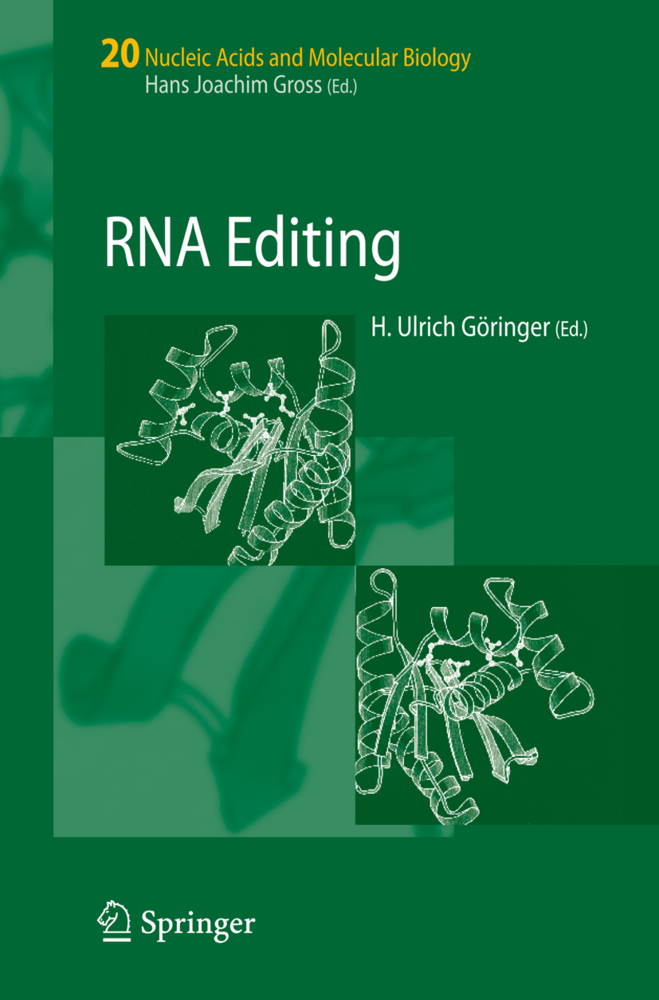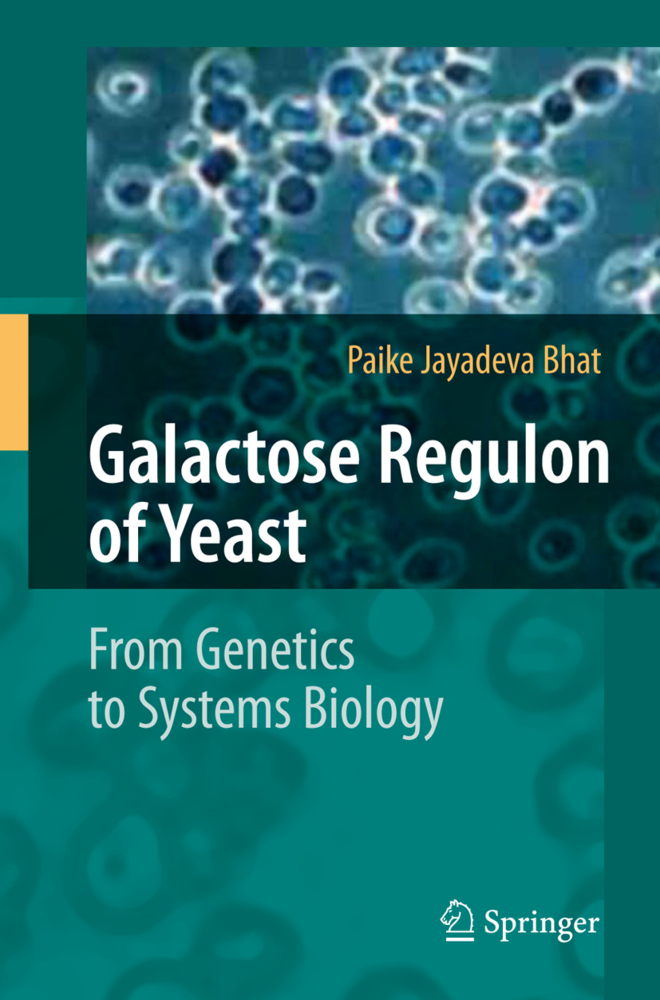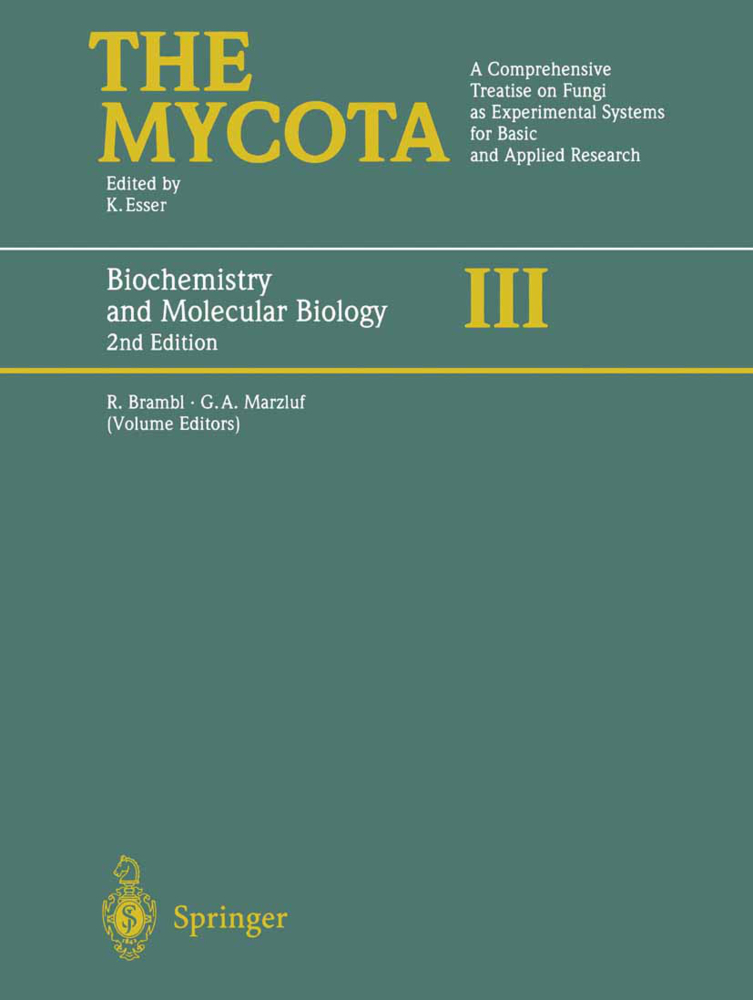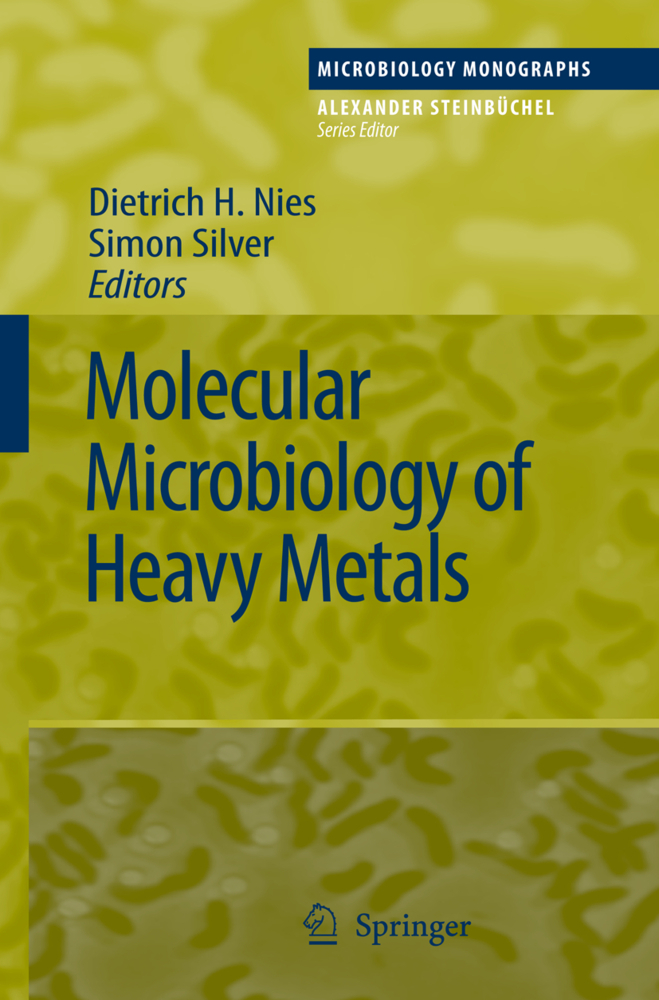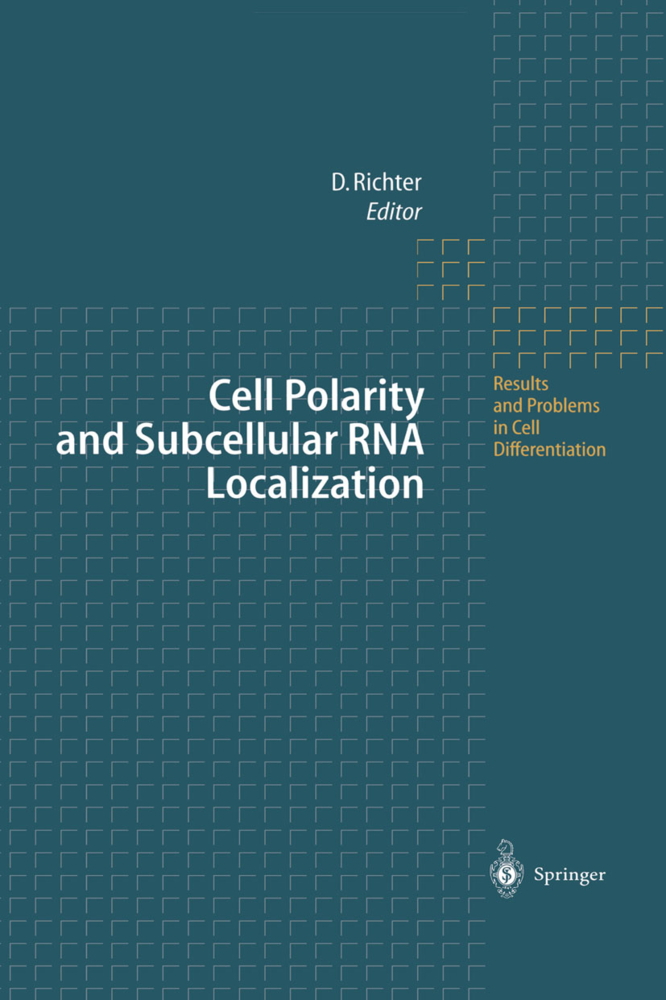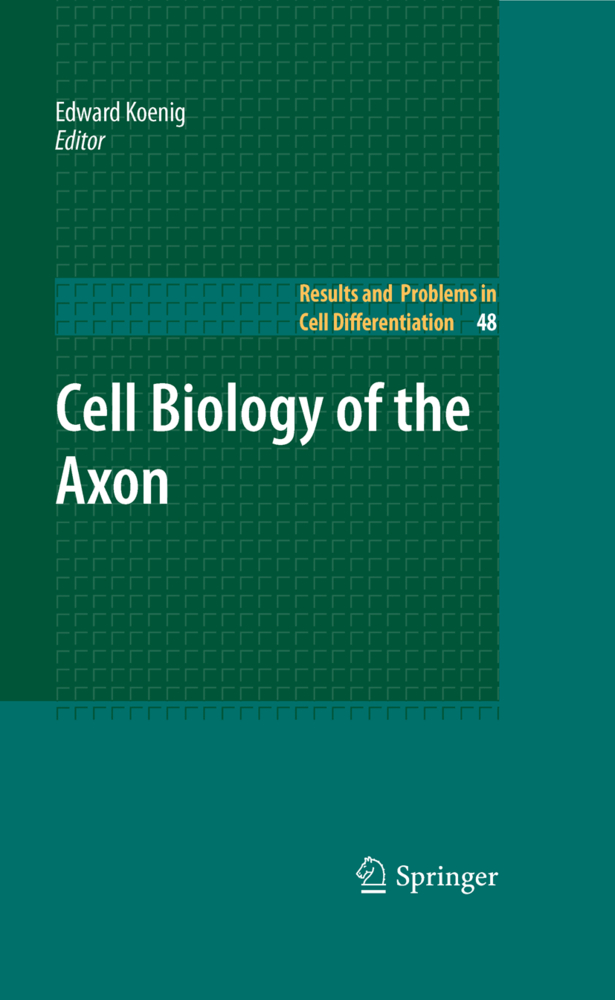MAP Kinases in Plant Signal Transduction
MAP Kinases in Plant Signal Transduction
Mitogen-activated protein kinase (MAPK) pathways are modules involved in the transduction of extracellular signals to intracellular targets in all eukaryotes. Distinct MAPK pathways are regulated by different extracellular stimuli and are implicated in a wide variety of biological processes. In plants, there is evidence for MAPKs playing a role in the signaling of abiotic stresses, pathogens, plant hormones, and cell cycle cues. The large number and divergence of plant MAPKs indicates that this ancient mechanism of bioinformatics is extensively used in plants and may provide new molecular hands on old questions.
2 Different MAPK Pathways Exist for Different Signals
3 What Are So Many Plant MAPK Genes For?
4 Arabidopsis: Emerging MAPK Modules
5 MAPKs and Stress Signaling
6 Cell Cycle
7 Auxin
8 Abscisic Acid and Giberellins
9 Ethylene
10 Concluding Remarks
MAP Kinases in Plant Signal Transduction: How Many, and What For?
1 Introduction
2 The Structure of MAPKs
3 MAPKs in Yeast and Animals
4 Plant MAPK
5 Plant MAPKs Can Be Classified into Five Groups
6 PERK Groups: Towards a Functional Classification System of Plant MAPKs
7 How Many Are Out There? Plant ESTs with Similarities to MAPKs
Reference
MAP Kinase Cascades in Arabidopsis: Their Roles in Stress and Hormone Responses
1 Introduction
2 MAPK Cascades Involved in Stress Responses in Animals and Budding Yeast
3 Arabidopsis Homologs of Protein Kinases in MAPK Cascades
4 Transcriptional Control of the Putative Components of Arabidopsis MAPK Cascades in Response to Environmental Stresses
5 Activation of MAPK-Like Activity by Environmental Stresses in Arabidopsis thaliana
6 Analysis of Functional Interactions of the Components of MAPK Cascades in Arabidopsis Using the Yeast System
7 Putative Upstream Factors of MAPK Cascades in Arabidopsis
Reference
MAP Kinases in Pollen
1 Pollen Development and Germination
2 Signal Transduction in Pollen
3 Changes in Pollen Grains After Hydration
4 MAP Kinases in Pollen
5 The Response of MAP Kinase Signaling Pathways to Osmotic Stress
6 Specificity of the MAP Kinase Response
Reference
Mitogen-Activated Protein Kinases and Wound Stress
1 Introduction
2 Evidence for Activation of MAPK-Like Protein Kinases by Wounding.-3 Evidence for Activation of MAPKs by Wounding
4 Transcriptional Activation of MAPKs by Wounding
5 Systemic Activation of MAPKs by Wounding
6 What Is the Initial Wound Signal for Activation of MAPKs?
7 Studies of Function of MAPKs Using Transgenic Plants
8 Concluding Remarks
Reference
Pathogen-Induced MAP Kinases in Tobacco
1 Introduction
2 Salicylic Acid-Induced Protein Kinase (SIPK)
3 MAP Kinases Activated by a Cell Wall-Derived Carbohydrate Elicitor and Purified Proteinaceous Elicitins from Phytophthora spp
4 Activation of SIPK by Bacterial Harpin
5 Activation of SIPK and WIPK by TMV
6 Activation of SIPK and WIPK by Avr9 from Cladosporium fulvum
7 Wounding and MAP Kinase Activation
8 General Discussion
Reference
Receptor-Mediated MAP Kinase Activation in Plant Defense
1 Introduction
2 Phytophthora sojae Elicitor-Induced Responses of Parsley Cells: A Model System for Plant-Pathogen Interaction
3 Pep-13 Elicitor Binds to a 100 kDa Plasma Membrane Receptor
4 Signal Transduction Events of Pep-13 Elicitor-Induced Defense Responses
5 Pep-13 Elicitor Induces Activation of a MAP Kinase
6 MAP Kinase Activation Occurs Through the Pea-13 Recentor
7 MAP Kinase Activation Is Dependent on Ion Fluxes
8 MAP Kinase Activation Is Independent of Oxidative Burst
9 Activation of MAP Kinase Is Correlated with Its Nuclear Translocation
Reference
Regulation of Cell Division and the Cytoskeleton by Mitogen-Activated Protein Kinases in Higher Plants
1 Regulation of the G1/S Transition: The Animal Paradigm
2 The Plant Players of G1 Control
3 Regulation of G2/M Transition: The Animal Paradigm
4 Plant Mitosis; Mechanically Different but the Regulation Might be the Same
5 Spatial Regulation of Cell Division and Growth are Dictatedby Plant Specific Cytoskeletal Structures
Reference
The MAP Kinase Cascade That Includes MAPKKK-Related Protein Kinase NPK1 Controls a Mitotic Process in Plant Cells
1 Isolation of the NPK1 cDNA
2 Identification of NPK1 as a MAPKKK
3 Structural Features of NPK1 and Its Arabidopsis Homologs, ANP1/2/3
4 Activity of ANP1 May be Regulated by Differential Splicing
5 Expression Pattern of the NPK1 Gene
6 Upstream and Downstream Factors of NPK1
7 Possible Function of NPK1
Reference
Mitogen-Activated Protein Kinase and Abscisic Acid Signal Transduction
1 Introduction: Facts and Speculation
2 Physiology of ABA
3 Signal Transduction Cascades of ABA
4 MAP Kinase Activation by ABA
5 The Importance of Protein Phosphatases for ABA Signalling
6 Conclusions
References
Signal Transduction of Ethylene Perception
1 Introduction
2 Detection of Phosphorylation Events in Ethylene Signal Transduction
3 A Survey of Putative Genetic and Molecular Components of the Ethylene Signal Pathway
4 Dynamics of Ethylene Perception and Signal Transduction
Reference.
MAP Kinases in Plant Signal Transduction
1 MAPK Modules Form Basic Units of Eukaryotic Signal Transduction2 Different MAPK Pathways Exist for Different Signals
3 What Are So Many Plant MAPK Genes For?
4 Arabidopsis: Emerging MAPK Modules
5 MAPKs and Stress Signaling
6 Cell Cycle
7 Auxin
8 Abscisic Acid and Giberellins
9 Ethylene
10 Concluding Remarks
MAP Kinases in Plant Signal Transduction: How Many, and What For?
1 Introduction
2 The Structure of MAPKs
3 MAPKs in Yeast and Animals
4 Plant MAPK
5 Plant MAPKs Can Be Classified into Five Groups
6 PERK Groups: Towards a Functional Classification System of Plant MAPKs
7 How Many Are Out There? Plant ESTs with Similarities to MAPKs
Reference
MAP Kinase Cascades in Arabidopsis: Their Roles in Stress and Hormone Responses
1 Introduction
2 MAPK Cascades Involved in Stress Responses in Animals and Budding Yeast
3 Arabidopsis Homologs of Protein Kinases in MAPK Cascades
4 Transcriptional Control of the Putative Components of Arabidopsis MAPK Cascades in Response to Environmental Stresses
5 Activation of MAPK-Like Activity by Environmental Stresses in Arabidopsis thaliana
6 Analysis of Functional Interactions of the Components of MAPK Cascades in Arabidopsis Using the Yeast System
7 Putative Upstream Factors of MAPK Cascades in Arabidopsis
Reference
MAP Kinases in Pollen
1 Pollen Development and Germination
2 Signal Transduction in Pollen
3 Changes in Pollen Grains After Hydration
4 MAP Kinases in Pollen
5 The Response of MAP Kinase Signaling Pathways to Osmotic Stress
6 Specificity of the MAP Kinase Response
Reference
Mitogen-Activated Protein Kinases and Wound Stress
1 Introduction
2 Evidence for Activation of MAPK-Like Protein Kinases by Wounding.-3 Evidence for Activation of MAPKs by Wounding
4 Transcriptional Activation of MAPKs by Wounding
5 Systemic Activation of MAPKs by Wounding
6 What Is the Initial Wound Signal for Activation of MAPKs?
7 Studies of Function of MAPKs Using Transgenic Plants
8 Concluding Remarks
Reference
Pathogen-Induced MAP Kinases in Tobacco
1 Introduction
2 Salicylic Acid-Induced Protein Kinase (SIPK)
3 MAP Kinases Activated by a Cell Wall-Derived Carbohydrate Elicitor and Purified Proteinaceous Elicitins from Phytophthora spp
4 Activation of SIPK by Bacterial Harpin
5 Activation of SIPK and WIPK by TMV
6 Activation of SIPK and WIPK by Avr9 from Cladosporium fulvum
7 Wounding and MAP Kinase Activation
8 General Discussion
Reference
Receptor-Mediated MAP Kinase Activation in Plant Defense
1 Introduction
2 Phytophthora sojae Elicitor-Induced Responses of Parsley Cells: A Model System for Plant-Pathogen Interaction
3 Pep-13 Elicitor Binds to a 100 kDa Plasma Membrane Receptor
4 Signal Transduction Events of Pep-13 Elicitor-Induced Defense Responses
5 Pep-13 Elicitor Induces Activation of a MAP Kinase
6 MAP Kinase Activation Occurs Through the Pea-13 Recentor
7 MAP Kinase Activation Is Dependent on Ion Fluxes
8 MAP Kinase Activation Is Independent of Oxidative Burst
9 Activation of MAP Kinase Is Correlated with Its Nuclear Translocation
Reference
Regulation of Cell Division and the Cytoskeleton by Mitogen-Activated Protein Kinases in Higher Plants
1 Regulation of the G1/S Transition: The Animal Paradigm
2 The Plant Players of G1 Control
3 Regulation of G2/M Transition: The Animal Paradigm
4 Plant Mitosis; Mechanically Different but the Regulation Might be the Same
5 Spatial Regulation of Cell Division and Growth are Dictatedby Plant Specific Cytoskeletal Structures
Reference
The MAP Kinase Cascade That Includes MAPKKK-Related Protein Kinase NPK1 Controls a Mitotic Process in Plant Cells
1 Isolation of the NPK1 cDNA
2 Identification of NPK1 as a MAPKKK
3 Structural Features of NPK1 and Its Arabidopsis Homologs, ANP1/2/3
4 Activity of ANP1 May be Regulated by Differential Splicing
5 Expression Pattern of the NPK1 Gene
6 Upstream and Downstream Factors of NPK1
7 Possible Function of NPK1
Reference
Mitogen-Activated Protein Kinase and Abscisic Acid Signal Transduction
1 Introduction: Facts and Speculation
2 Physiology of ABA
3 Signal Transduction Cascades of ABA
4 MAP Kinase Activation by ABA
5 The Importance of Protein Phosphatases for ABA Signalling
6 Conclusions
References
Signal Transduction of Ethylene Perception
1 Introduction
2 Detection of Phosphorylation Events in Ethylene Signal Transduction
3 A Survey of Putative Genetic and Molecular Components of the Ethylene Signal Pathway
4 Dynamics of Ethylene Perception and Signal Transduction
Reference.
Hirt, Heribert
| ISBN | 978-3-540-65625-8 |
|---|---|
| Artikelnummer | 9783540656258 |
| Medientyp | Buch |
| Copyrightjahr | 1999 |
| Verlag | Springer, Berlin |
| Umfang | X, 168 Seiten |
| Abbildungen | X, 168 p. |
| Sprache | Englisch |

